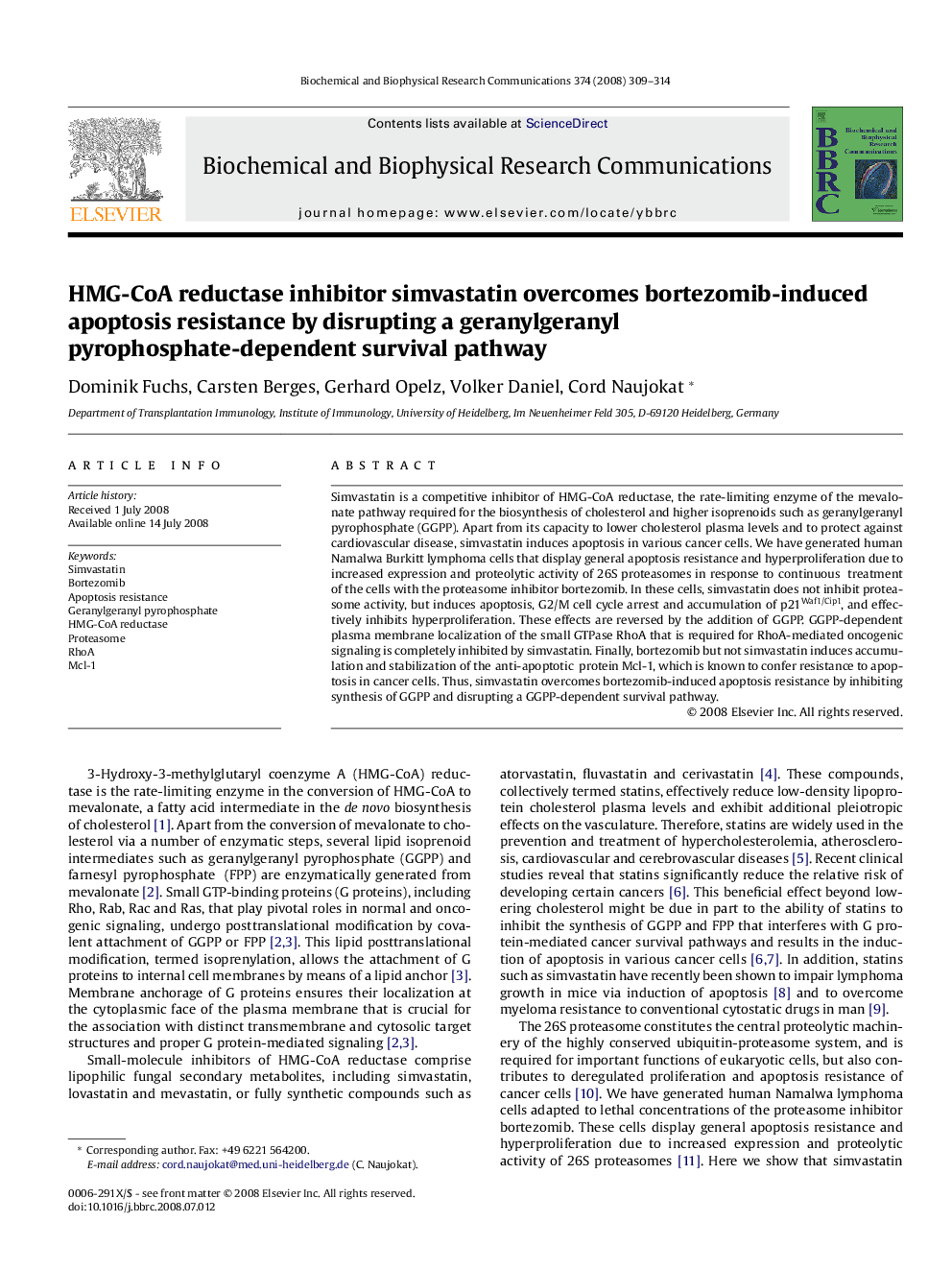| کد مقاله | کد نشریه | سال انتشار | مقاله انگلیسی | نسخه تمام متن |
|---|---|---|---|---|
| 1934938 | 1050653 | 2008 | 6 صفحه PDF | دانلود رایگان |

Simvastatin is a competitive inhibitor of HMG-CoA reductase, the rate-limiting enzyme of the mevalonate pathway required for the biosynthesis of cholesterol and higher isoprenoids such as geranylgeranyl pyrophosphate (GGPP). Apart from its capacity to lower cholesterol plasma levels and to protect against cardiovascular disease, simvastatin induces apoptosis in various cancer cells. We have generated human Namalwa Burkitt lymphoma cells that display general apoptosis resistance and hyperproliferation due to increased expression and proteolytic activity of 26S proteasomes in response to continuous treatment of the cells with the proteasome inhibitor bortezomib. In these cells, simvastatin does not inhibit proteasome activity, but induces apoptosis, G2/M cell cycle arrest and accumulation of p21Waf1/Cip1, and effectively inhibits hyperproliferation. These effects are reversed by the addition of GGPP. GGPP-dependent plasma membrane localization of the small GTPase RhoA that is required for RhoA-mediated oncogenic signaling is completely inhibited by simvastatin. Finally, bortezomib but not simvastatin induces accumulation and stabilization of the anti-apoptotic protein Mcl-1, which is known to confer resistance to apoptosis in cancer cells. Thus, simvastatin overcomes bortezomib-induced apoptosis resistance by inhibiting synthesis of GGPP and disrupting a GGPP-dependent survival pathway.
Journal: Biochemical and Biophysical Research Communications - Volume 374, Issue 2, 19 September 2008, Pages 309–314